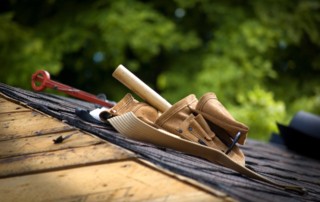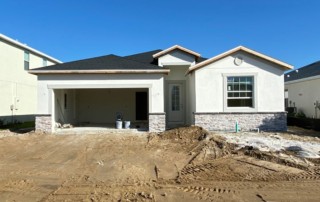The roof keeps you and your family safe, dry and protected – in fact, some would argue it is the most important structural feature of your Venice or North Port home. But given it’s importance, most homeowner’s know very little about their roof. Understanding how your roof is built and being able to identify the different aspects of your roof, however, will help you to better maintain it.
Here is a quick primer on each element of your roof, and the part it plays in protecting your home.
Basic Elements of Roof Construction
Essentially, your roof is made up of four major components:
- The Rafters: Rafters are seen from the underside as the series of sloped structural beams (usually made of wood) which are designed to support the roof deck and the roofing materials. The join trusses and joints as the “bones” of the roofing structure.
- The Sheathing or Roof Deck: The first layer of your roof structure is called sheathing, and it is usually made of particleboard or plywood. The board creates a hard, rigid surface which will be able to support the remaining roof layers. Not only does it provide a flat surface for applying materials, but it is necessary for safely and securely fastening nails.
- The Underlayment: Covering the sheathing is the underlayment. If your roof is 30 or 40 years old, it may not have an underlayment, but it is a standard construction element now and is typically required by building codes. Underlayment, which is attached to the sheathing, is made of heavy felt or a felt-like material. It provides a watertight barrier between the exterior and interior layers of your roof structure.
- Roofing Materials: The final layer is the roofing materials – usually asphalt shingle or clay tile in the Venice area. Stone, slate, and wood are also sometimes used, generally to achieve a certain aesthetic. Whichever roofing material is chosen, it will need to be built to code and maintained in the way best for that material.
Other Parts of the Roofing Structure
You may have heard of some other parts of the roof and wondered what they are. Here are just a few terms you are likely to hear if you are having a roof inspection, or are considering roof maintenance or a new roof installation.
- The eaves are located at the edge of the roof, and they extend over the face of the exterior wall. The practical purpose of this part of the structure is to allow water running down the roof to fall well clears of the walls and foundation. A drip edge performs a similar function, making sure water runs off the roof and into your gutters.
- Flashing is comprised of metal strips (made of lead, aluminum, copper, stainless steel and zinc alloy) which are installed around roof penetrations, such as vents and chimneys. The flashing is designed to decrease water penetration through any cracks or gaps which may be present, directing water away from the seams.
- The roof ridge is the peak – the highest point on a roof where two roof areas meet.
- Soffits are constructed from the top of an exterior house wall to the outer edge of the roof. The soffit fills in the area between a home’s siding and the roofline.
Understanding these terms can greatly help to understand your roof construction, and any roof estimates you may receive – allowing you to compare them apples to apples. Being an educated consumer is always the smartest way to purchase your new roof – and if you do not understand something, be sure to ask! At [company_name], we are committed not only to exceptional service and expert workmanship, but to the highest customer satisfaction. Have a roofing question? Call us today!




